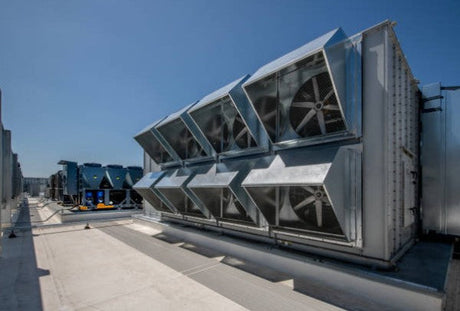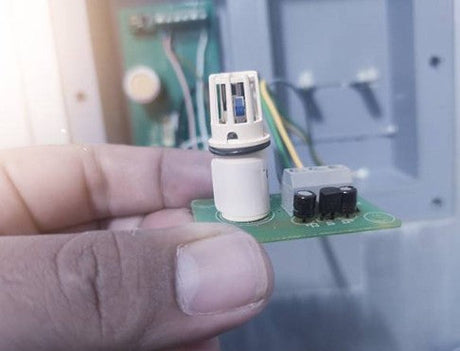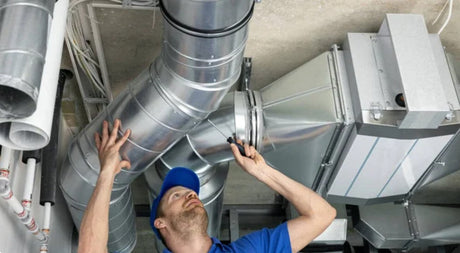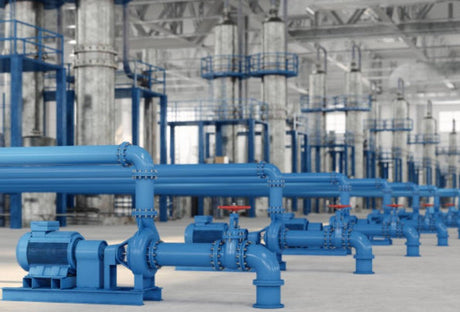In industry, the measurement of flows - be it from liquids or gases - plays an important role in controlling processes, regulating and monitoring processes. The correct selection of a measurement method is crucial for the efficiency and safety of operating processes. In this article we provide an overview of the most common measurement methods.
The choice of Flow measurement methodology depends on a variety of factors, including the type of medium, the necessary precision and the area of application.
Mechanical flow measurement
The Mechanical flow measurement is one of the longest -established measurement methods. It includes classic methods such as blanks, shovel wheel and oval wheel meters:
- Wing: Here the flow of the fluid drives a whipped wheel. The speed of the wheel is proportional to the flow speed and thus to the Volume flow.
- Shovel wheel counter: Similar to the whipped wheel meter, but with an arrangement of shovels that capture the flow speed.
- Oval bike counter: Two oval -shaped gears that pass against each other and their rotation enables the volume flow directly.
These devices use physical components that move in the flow medium. The rotating part is proportional to the flow speed and thus to the volume flow.
While mechanical flow meters are often robust and simple and are therefore inexpensive and versatile, the mechanical wear leads to measurements over time, with regular cleaning and checks that flow in the medium, especially in the medium.
Calorimetric flow measurement
The calorimetric flow measurement is a versatile technology that is particularly suitable for measuring flow rates and the capture of currents in pipes and air ducts.
The procedure uses two temperature sensors: a sensor that the temperature the medium measures (reference sensor) and a second sensor that heats the medium (heating element). The faster the medium flows, the faster the heat supplied is dissipated. The cooling rate or the temperature difference between the two sensors is a measure of the flow speed of the medium and is used to calculate the flow rate.
In particular, it should be emphasized under the advantages of this technology:
- No moving parts: This means less wear and high reliability over long periods of time.
- Insensitive to dirt: Since there are no moving parts in the medium, calorimetric sensors are extremely robust against dirt.
- Easy installation and maintenance: Calorimetric sensors can easily be integrated and waited into a wide variety of systems.
- High flexibility: They can be used for gases and liquids, over wide temperature and pressure areas and in various line sizes.
Restrictions on the calorimetric measurement result from external temperature fluctuations or heat sources near the sensor, since the calorimetric flow measurement is based on temperature changes. The measurement of media with large particles, abrasive fabrics or high content of fixed components can be difficult because they can damage the sensor interface or impair its heat transfer.
Further information on the calorimetric flow measurement can be found here.
Ultrasonic flow measurement
The ultrasound flow measurement has established itself as a reliable method to record the flow rates of liquids and gases. With its ability to measure without direct contact with the medium, it offers a versatile solution for a wide variety of applications.
The ultrasound flow measurement is based on the use of high-frequency sound waves. There are two main types of this measurement technology:
- Duration difference procedure: In this process, two ultrasonic sensors are installed on the outside of the pipeline, between which ultrasound signals are sent in both directions. The flow is determined using the time difference that the signal needs to travel upstream or downstream. The higher the flow speed, the greater the time difference.
- Doppler procedure: This procedure is used when the fluid particles or bubbles contain. The sensors send ultrasound signals to the medium, which are reflected and received by the particles or bubbles. The frequency shift (Doppler effect), which occurs when the sound waves are reflected by moving particles, is a measure of the speed of the fluid.
These technologies are non-invasive and can thus reduce the risk of contamination or leakage of pipelines. In addition, the devices work low in maintenance and can be used flexibly. Despite the fundamentally simple handling, the correct alignment of the sensors is often difficult and require precise knowledge of the local flow conditions.
Magnetic-inductive flow measurement
The Magnetic-inductive flow measurement Only works with electrically conductive fluids. It is based on the Faraday law of electromagnetic induction that states that a tension is induced in a ladder that crosses a magnetic field. When measuring the flow, the conductive fluid is guided by a magnetic field. The flowing liquid acts as a ladder. Vice rights to the direction of flow and the magnetic field forms tension, which is measured by the measuring device. This voltage is proportional to the speed of the fluid and thus directly to the volume flow.
Due to the contactless measurement, there is no impairment of the river and no contamination of the medium. The devices offer high measurement accuracy and are insensitive to pressure and temperature fluctuations of the medium. In contrast, it must be noted that the current of distilled water, oil, gases or non -conductive liquids cannot be measured with this procedure. In addition, magnetic-inductive measuring devices are often expensive to buy.
Coriolis mass flow measurement
The Coriolis mass flow measurement is one of the most precise methods to determine the mass flow of gases and liquids. Coriolis mass flow meters contain one or more vibrating pipes through which the medium flows. If no medium flows through the pipes, they swing in a natural resonance frequency. If the medium begins to flow, an additional force is generated due to the coriolis effect, which causes a change in the form of vibration. This change is proportional to the mass of the flowing medium. Sensors and electronics in the measuring device record these changes and convert to a signal that represents the mass flow rate.
Coriolis mass flow measurement is a highly precise technology that is particularly valued in applications, where precision and reliability are essential. At the same time, the measurement principle is costly and can be restricted to corrosive or highly viscous media.
If you have any questions or need advice for your application, do not hesitate to contact our experts. Secure yourself here a free consultation date, Request a recall or Write us a message.





